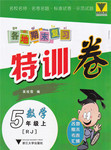题目内容
My name is Ann. I’m a middle school student. I’m ___Class 3, Grade 7. I usually go to____ from Monday to Friday. My home isn’t far from our school, so I often go to school ____. I have seven____ every day. I like English class very much.
Today is Sunday. I don’t have to go to school. After breakfast, I go to the store_____my family. We buy some bread, fish, eggs and apples. We buy____milk, too. Then my father____ us to the Star Park. There are ___people in the park. Some people chart(聊天). Some people sing. We have a picnic there, I eat some nice food. My mother takes some phots for us. My brother Tom _____with other boys. My father goes fishing. He gets a big fish. He feels very _____ We all have a good time there.
1.A. on B. in C. at D. to
2.A. school B. work C. home D. shop
3.A. by plane B. by bus C. by car D. on foot
4.A. apples B. books C. classes D. pencils
5.A. having B. and C. with D. or
6.A. four B. four bags C. four bag of D. four bags of
7.A. waves B. takes C. points D. catches
8.A. no B. many C. a lots of D. lot of
9.A. plays basketball B. play the basketball C. plays the basketball D. play basketball
10.A. scared B. lonely C. excited D. sad
 各地期末复习特训卷系列答案
各地期末复习特训卷系列答案 小博士期末闯关100分系列答案
小博士期末闯关100分系列答案
